
The seeds are, if I may say so, the Great Work (thus, with the first letter capitalized) of nature. After millions of years of evolution, all the genetic information of a plant has been compressed into something so small that it can weigh from a few grams to several kilos. Being able to hold them is a pleasure, and even more so if you sow them and they germinate. But that's the problem: How to get a new generation to see the sunlight?
There are many types, and there are several methods of germination that are known, so that we do not have any doubts -or to try that this does not happen- we are going to explain how to germinate seeds.
What is a seed?
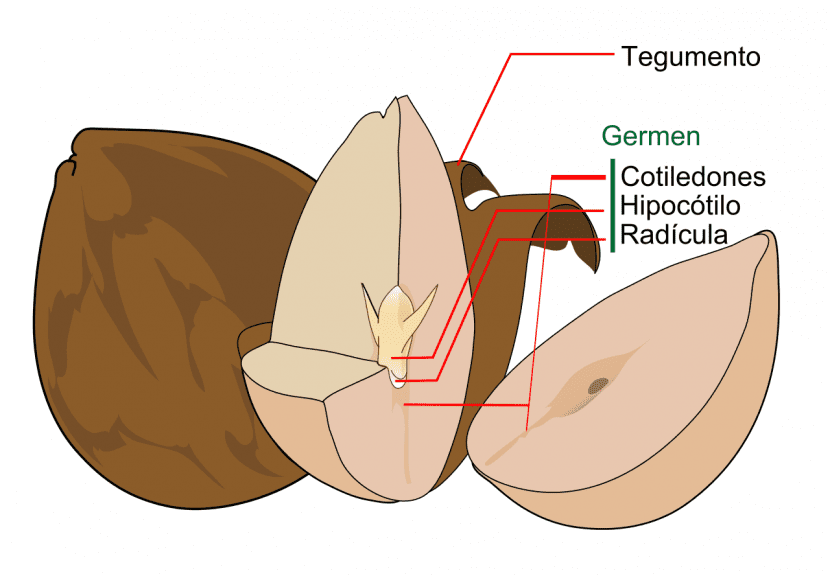
Parts of an avocado seed.
A seed, also known as a seed or nugget, It is the part of the plant from which a specimen with characteristics of both parents will emerge. It is produced when the ovum matures, which is present in both the gymnosperms (plants that in addition to not having very showy flowers produce naked seeds, that is, without the protection of a shell or skin) and the angiosperms (Plants with showy flowers that do produce fruits with shells or skin that serve as protection for the seed).
Inside it is an embryo and a stored food source, which will be of vital use to you to be able to germinate and grow. Said food comes from the parent plant and is rich in oil or starch and proteins.
What is your function?
The function of a seed is to propagate your species and thus ensure its survival. But it has a serious problem: unlike animals, plants cannot be moved from one place to another, but instead depend on the weather conditions and their pollinators to find the best place to make way for the new generation.
How to get it to germinate?
Since there are so many plants and so many types of seeds, there are also various germination methods. So, let's see how to get them to germinate depending on their main characteristics:
Direct sowing
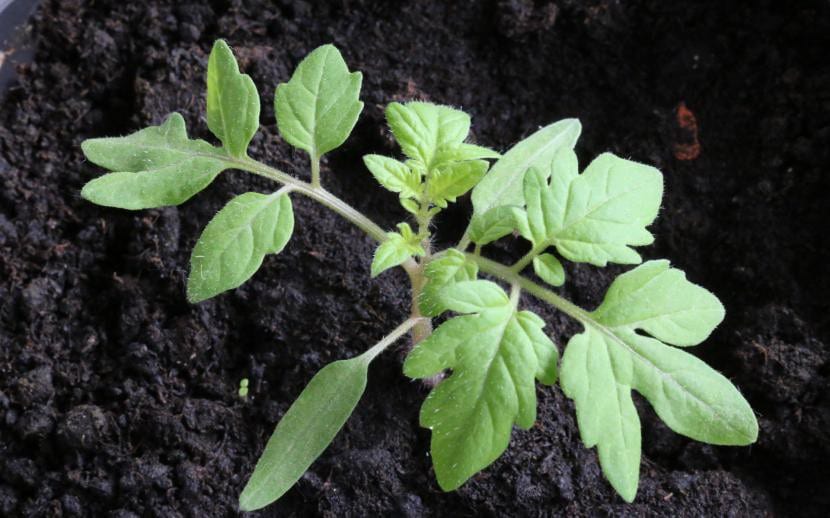
Direct seeding It is the act of sowing the seeds directly in a seedbed or in the final location. It is usually done in spring, or if we live in an area with a mild climate towards the end of winter.
These seeds are usually small and have a very low weight (no more than a few grams), such as those of horticultural plants (including fruit trees), such as jacaranda or mandarin, and flowers. The way to proceed is as follows:
Sowing in seedbed
- The first thing to do is prepare the seedbed. As such, you can use flowerpots, milk containers, yogurt glasses, seedling trays ... Regardless of what we use, it must have holes for water drainage.
- Then we fill it with a pot.
- Next, we spread the seeds on the surface.
- Then we cover them with a thin layer of substrate.
- Finally, we water.
Sowing in the ground
- The first thing is to delimit the area where we are going to sow, for example with stakes or iron rods.
- Then we remove the grass and stones.
- Next, we dig shallow trenches (less than 5cm) so that they are parallel, and we water.
- Finally, we put the seeds in the trenches and cover them with a thin layer of soil.
Thermal shock
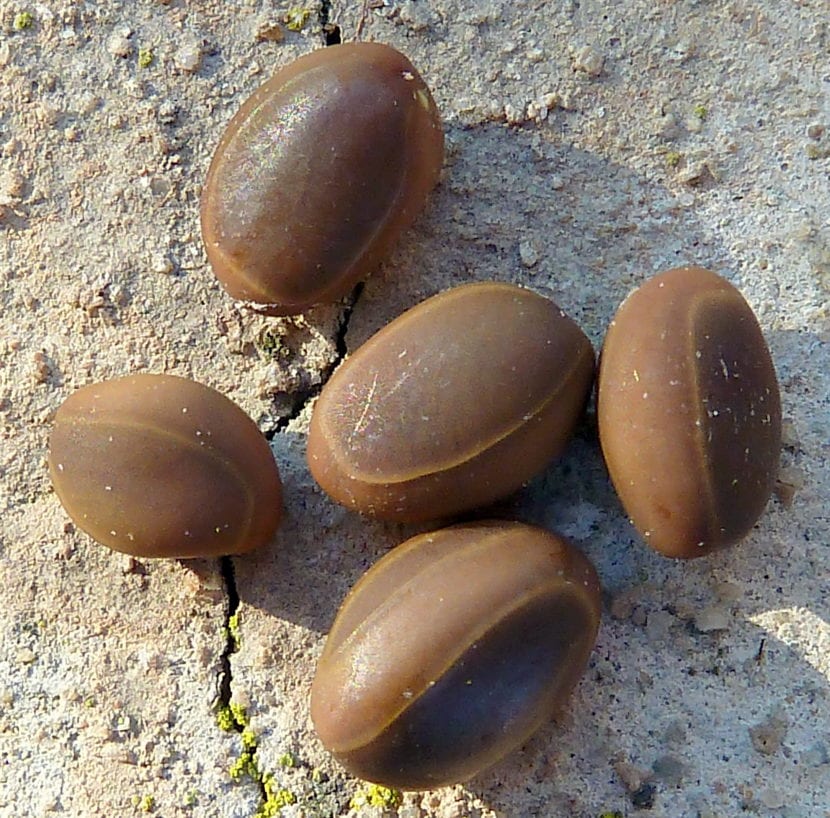
Seeds of acacia farnesiana.
Thermal shock It is a pregerminative treatment that is done in order to break the covering that protects the seed. It is a way of imitating the sudden changes in temperature that exist in the habitats of the plants that produce these seeds, which are very hard. It is the ideal germination method for Acacia, Albizia, Gleditsia, Delonix, and the like.
The steps to follow are those:
- We boil a little water and pour it into a glass.
- We place a glass right next to it with water at room temperature.
- We introduce, with the help of a strainer, the seeds in the glass with boiling water for 1 second.
- Then, we put them in a glass with water at room temperature for 24 hours.
After that time, we will sow them in seedlings as explained above.
Scarification
Scarification It is a method that consists of sanding the seed a little so that it can germinate more quickly. We can use it on those plants that also produce tree seeds that are hard, like those of the Delonix.
Proceed as follows:
- With sandpaper, the seed is scarified a little until we see that it changes color.
- Then, we put it in a glass with water at room temperature for 24 hours.
- Finally, we sow it in a seedbed.
Stratification
There are two types:
Cold
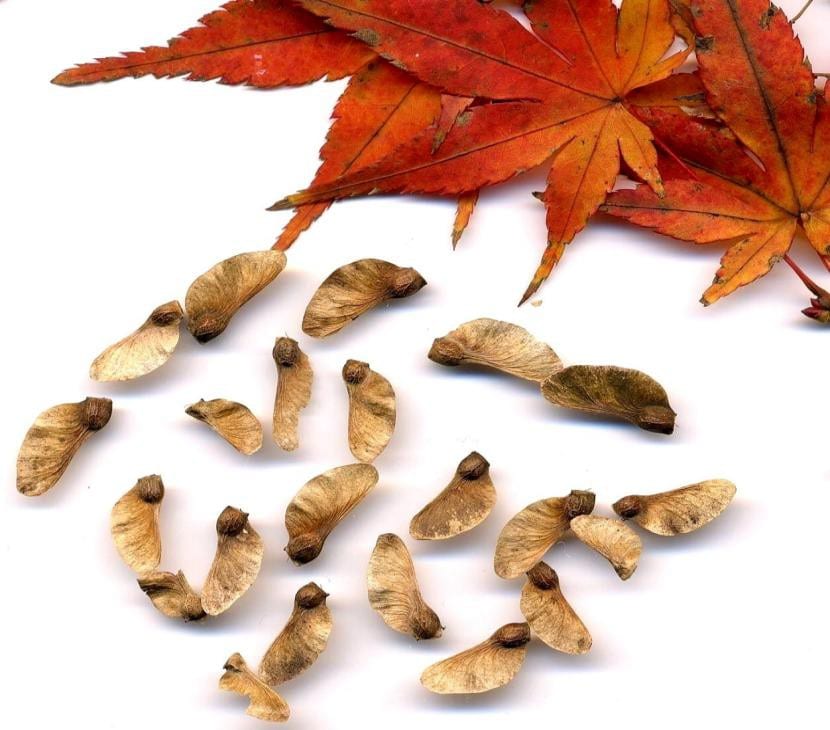
Maple seeds.
It is the method by which the seeds are allowed to pass all the cold they need to be able to germinate. Where? In the fridge at 4-5 degrees Celsius for 2-3 months.
This is what we have to do if we want to germinate deciduous and coniferous trees from temperate climates (maples, beech, oaks, firs, etc.) and if we live in an area with mild temperatures in winter:
- The first thing is to fill a clear plastic tupperware with vermiculite.
- Then, we moisten it well trying not to have any water left over.
- Next, we place the seeds and sprinkle copper or sulfur to prevent fungus.
- Then we cover them with more vermiculite and close the tupperware.
- Finally, we put it in the fridge.
Once a week we have to remember to open it so that the air is renewed and to check that it has not lost moisture. In the event that this happens, it would be enough to spray the substrate a little.
After 2 or 3 months, it will be time to sow the seeds in a hotbed.
Caliente
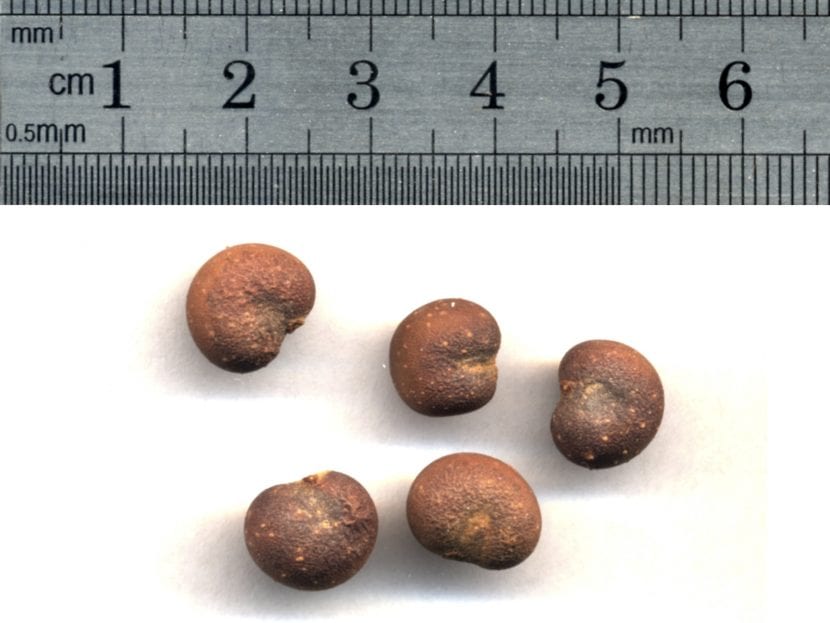
Seeds of Adansonia digitata (baobab)
It is a method by which you get the seeds to pass a lot of heat, the necessary so that they can germinate. It is not widely used, because there are really very few plants that need this treatment, but ... there are some 🙂. For example, Adansonia (Baobab) are trees that appreciate it, since in their natural habitat they remain in the digestive tract of elephants for a short period of time.
How is it done? Very easy:
- The first thing is to fill a thermos bottle with very, very hot water (without boiling).
- Afterwards, we introduce the seeds inside.
- Finally, we leave them there for 24 hours.
After that time, we will plant them in a seedbed.
And with this we end. I hope it has been useful to you.
Very INTERESSING.
Thank you very much, Francisco.